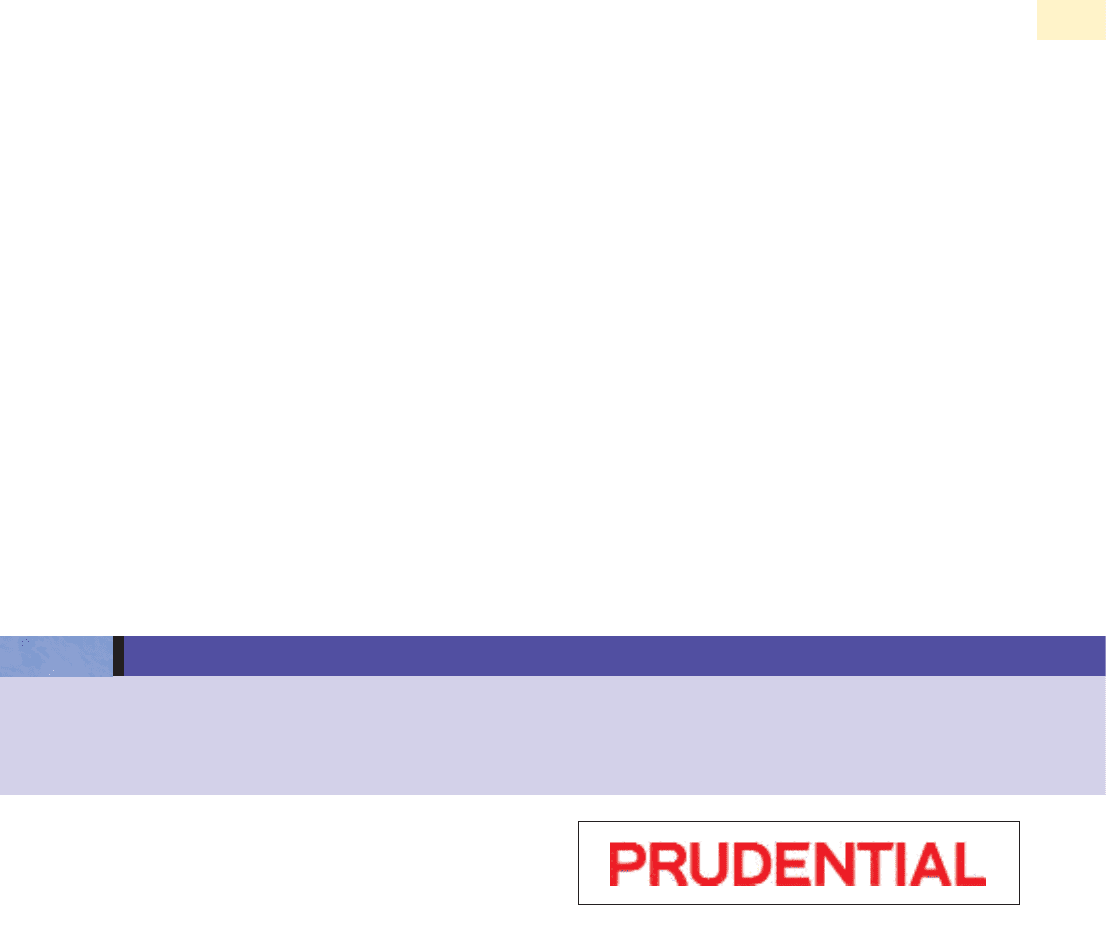Mullins L.J. Management and organisational behaviour, Seventh edition
Подождите немного. Документ загружается.


CHAPTER 13 THE NATURE OF WORK GROUPS AND TEAMS
545
The speed of developments in both hardware and soft-
ware means that there is a constant need to invest in new
processes, with the resulting training lag before they can be
exploited commercially. This is a problem in such a small
company as it leaves budgets very tight. There just is not suf-
ficient spare cash to fund ‘R & D’ in the broadest sense.
At this stage the future will have to be amalgamation with
a larger company but everyone fears that will mean a more
hierarchal organization which could destroy some of the cre-
ativity and the ‘fun’.
What have we learned?
■ Autonomous teamwork works and saves money.
■ Management needs to be self-confident, to see them-
selves as leaders rather than controllers.
■ Teamwork saves time and allows management to concen-
trate on business development.
■ Quality of the work improves and so does communication
between different disciplines.
■ It must be OK to make mistakes and OK to admit that you
are in difficulties (experience is that team members will-
ingly dig each other out – they know it could be their turn
to get help next).
■ Staff are very responsible and interested when treated
as adults.
■ It is important that staff continue to have the opportunity
to learn.
■ Good customer relations are developed and maintained by
giving staff the ability to respond to client’s requests.
It is important that the development team and the client’s
users get to know each other and understand each other. In
many situations that we have experienced in other firms we
noticed that communication between supplier and client goes
through the Sales/Marketing Departments and the Head of
Departments. We encourage the business analysts/developers
to talk directly with the client’s staff who will use the product.
This has reduced misunderstanding and increased both the
customer satisfaction and the developers’ work. The teams
have displayed a high level of creativity and innovation in their
work and have developed several new processes for clients.
If we are asked ‘what one thing has made the team struc-
ture a success?’ the answer is that ‘no one thing’ works. A
combination of trust, adult one-to-one relationships are vital
but these must be combined with a sense of fun and achieve-
ment for everyone.
Reproduced with permission from Eddie Brennan, QWL News and Abstracts,
ACAS, No. 144, Autumn 2000, pp. 8–10.
Eddie Brennan, Consultant, Uni-world Ltd. The company specialises in change
management and team building by using and training the client’s own staff.
Contact email: brennanu@indigo.ie
MANAGEMENT IN ACTION 13.2
Remote control – a case study
Remote team working is not simply a matter of ensuring staff
have access to a laptop and a telephone line, and assuming
that they will be able to continue with their work. The man-
agement and communications skills that this new working
culture requires are also key to success. When one of
Britain’s leading financial services providers. Prudential,
decided to introduce extensive remote working as part of its
drive to build stronger customer relationships they called on
the experience and expertise of Chameleon Training &
Consulting. The Prudential were keen to ensure that their
employees not only had the technology, but also the skills, to
maximise the individual and business benefits offered by this
new way of working. Chris Parker, Chameleon’s Marketing
Manager, explains how technology is only the starting point to
developing an effective remote team.
Technology has been a constant driver for change in British
business over the last decade. The myth has been that the
technological changes alone have single-handedly propelled
workplace culture from the age of telephone and typewriters
into the broadband world of high speed networks, email and
mobile communication, mobile phones and laptops. The reality
is a need to adapt management techniques, working culture
and employee skill levels. Working in the training and HR
industry we know that these requirements cannot be ignored.
In addition, many companies have attempted to introduce
technology for the sake of it, or brought in ‘new' gadgets with-
out looking at the impact on the organisation, or individual
workers, and have spent even less time looking at the role
training can play in integrating the new technology into the
processes and working culture of an organisation.
The pace of change
Prudential is one of the largest and most prestigious financial
services organisations, with more than 150 years experience
building long and successful relationships with both share-
holders, customers and policyholders alike. The financial
services industry has changed and continues to change at a
faster pace than almost any other, and for this reason, tech-
nology, and the delivery of the skills required to integrate new
ways of working into employees’ daily processes and func-
tions, is more important than in any other area of business.
Practice Head of Prudential’s B2B division, and respon-
sible for the development of the team, Martin Boniface says
that this changing marketplace was one of the core reasons
Courtesy Prudential

546
PART 5 GROUPS AND TEAMWORK
Prudential decided to change their working culture, embrac-
ing technology, and ensuring that their employees have the
skills to work effectively in this new environment. ‘We realised
that technology, and the effective utilisation of it through
training, offered us a flexible, customer facing approach to
our business, offering benefits for the company, its customers
and Prudential employees.’
How to achieve this was going to be another matter
entirely, and one which would prove to be far more wide-
ranging than originally thought.
A question of image
According to Boniface, ‘We wanted to develop a culture where
we were able to be proactive, rather than reactive to the needs
of our customers. One of the challenges that Prudential faced
in this changeable market was to move away from the tradi-
tional view of the “man from the Pru” that policyholders know,
towards a more modern image in keeping with the changing
market’s requirements, and this needed to be replicated
throughout the business. Representatives were spending hours
travelling to visit corporate customers, whilst still spending time
at a centralised office. We realised that in order to offer a more
customer focused approach to our corporate clients, we would
have to fundamentally change our working culture.’ Remote
working was positively encouraged for staff in the B2B division
at Prudential, with employees using laptops and mobile
phones to allow the team to function effectively, but initially this
was the exception rather than the rule.
Focus on the customer
‘In the B2B division, we made some fairly radical changes’,
says Boniface. ‘We realised that remote working was the way
forward for us, and reorganised our business to focus on our
customers, rather than their geographical location – as had
been the way in the past. This meant that remote working
now became the rule, with the exception of members of our
support team who still had a centrally based office location.
The ability of our employees to work remotely aflowed us to
spend more time concentrating on the individual require-
ments of our corporate customers, and offered financial and
efficiency benefits for both the company, and our employees.
We weren’t asking our staff to travel from their homes to an
office, and spend hours travelling out to customers’ premises,
back to the office, before heading home in the evening. This
energised and invigorated the team instantly.’
Managing culture change
Having implemented this new way of working for a couple of
months, it became obvious that whilst much of the culture
change was benefical, there were also areas which could be
improved, and some that emerged which had not been
expected. ‘It was at this point that Prudential looked for
expert help in remote team management, in order to refine
and improve the new remote team working practices, and
develop solutions designed to enable staff to manage their
new working environment and the change of culture’, says
Philippa Muress, Chameleon’s Head of Consultancy Services.
‘Having trialled remote working, Prudential carried out a
number of focus groups to identify areas which needed refin-
ing. As a result, we were presented with a number of
management challenges and objectives.’
Whilst the remote team working had been generally suc-
cessful, with Prudential ensuring that staff had been
supported in terms of hardware, with budgets provided for
selecting computer technology, installing high speed commu-
nications access, and addressing Health and Safety issues,
an overwhelming need for emotional support and remote, or
virtual, team building had been identified.
The significant difference between central office-based
working and remote working is that it is difficult to develop a
team spirit, a sense of camaraderie, working remotely through
new electronic and telecommunications methods. Morale and
motivation had also been identified as areas with which
Prudential’s new virtual team required some assistance.
‘Communication and trust are key elements of developing
strong remote team working’, says Philippa Muress. ‘There is
a difference between managing a team in a traditional office
environment, and managing a remote team of workers which
requires new skills and new management techniques. Some
of these skills can be adapted from traditional management
methodology, but there are also specific techniques and
skills, which are critical in the development of an effective
remote team. These are exactly the areas which we help
organisations to develop through our Managing Remote
Teams programmes.’
‘You can’t control the volume of email’, adds Boniface.
‘You have no way of knowing the emotional state of the recip-
ient of an email, or how they perceive the content of the
message, which means that trust has to be central to
the team, and clarity is essential to avoid misunderstandings.’
The ability for open discussion where things are unclear
forms a central part of ensuring that the team is both effective
and efficient. ‘The last thing you want is for conflicts to grow
from small misunderstandings because someone has not
picked up the phone to say, “Do I understand this correctly?”’
The delivery of the course has taken a number of different
forms, with Chameleon using a blend of input sessions,
assessment tools and role-play techniques during the imple-
mentation of the first phase of Prudential’s Remote Teams
training. Issues of management techniques, motivation and
empowerment, and developing a team spirit from remote
locations have aIl been central in the work, ensuring that staff
have received a totally bespoke solution tailored to the spe-
cific needs of the organisation. Philippa Muress says, ‘One of
the most important parts of developing a training programme
is ensuring that the development and implementation
addresses the aims and objectives of both the team and the
wider organisation. When developing an effective remote
team it is important that you don’t isolate the remote mem-
bers from the rest of the organisation.’
The programme has highlighted the development needs,
not only of the managers and remote workers, but also of
those who provide support back in the office, and one-day
workshops have been arranged for the whole team. ‘We
recognise the need for a strategic and co-ordinated pro-
Management in Action 13.2 continued

CHAPTER 13 THE NATURE OF WORK GROUPS AND TEAMS
547
gramme of change in order to develop long-standing effective
and successful remote teams’, says Boniface. ‘There is a very
important coaching element to the remote teams programme
which Chameleon has developed for us, which offers vital
support and reassurance. Working remotely can be a lonely if
the necessary skill training is not a place, and we’re delighted
with the way that Chameleon has been there at every step.
Our single point of contact has been one of their Remote
Team experts, who understands our business, our aims and
our specific business focus.’
Enjoying the benefits of managed change
The benefits of this new virtual team are already being experi-
enced at ‘the Pru’. Their vision of creating a more
customer-faced commercial approach is generating more
business with less cost, (which has occurred, in part, as a
result of the reduced requirement for desk space), and has
raised customer satisfaction levels in the process.
In a market which has experienced considerable change,
this has generated substantial competitive advantage for the
company, and boosted morale within the CRM team.
Chameleon’s Philippa Muress says that the benefits experi-
enced by the Prudential are all classic traits of effective
Remote Teams training, ‘Technology is only the beginning of
developing a remote team environment – without the neces-
sary tools to manage the new working practices, the new
approach to managing and being managed, and the new
communication and emotional skills, remote team working
will not bring the efficiencies and financial rewards which can
be achieved with a co-ordinated, structured and expertly
delivered programme.’
Further information can be found on the Chameleon website: www.chameleon
training.co.uk
Reproduced with permission from Manager, The British Journal of Administrative
Management, March/April 2002, pp. 30–31 and with the permission of Murray
Blair, Chameleon Training and Consulting, Surrey.
1 What is a group? Explain the importance and influence of group values and norms, and
give practical examples from within your own organisation.
2 How would you distinguish between a ‘group’ and a ‘team’? To what extent do you believe
the distinction has practical significance for managers?
3 Distinguish between formal and informal groups, and provide your own supporting ex-
amples. What functions do groups serve in an organisation?
4 Identify different stages in group development and maturity. What other factors influence
the cohesiveness of work groups? Give examples by reference to a work group to which
you belong.
5 Assess the impact of technology as a determinant of group behaviour and performance.
What action might be taken by management to help remove some of the alienating or
stressful aspects of technology?
6 What is meant by the role structure of an organisation? Construct a diagram which shows
your own role-set within a work situation. Give examples of informal role expectations to
which you are, or have been, a party.
7 Explain different forms of role conflict which can result in role stress. Give an account of a
work situation in which you have experienced role conflict/role stress. As manager, what
action would you have taken in an attempt to rectify the situation?
8 Detail fully what you believe are the essential characteristics of a successful work group
or team.
9 As a manager, explain how you would attempt to develop effective group/team relation-
ships and performance. Explain clearly the communication and leadership skills required.
REVIEW AND DISCUSSION QUESTIONS

548
PART 5 GROUPS AND TEAMWORK
Obtain, or prepare, a chart depicting the formal groupings within your organisation or a large
department of the organisation.
a Using this chart, identify clearly the informal groups that exist within the formal structure.
b Discuss ways in which these informal groups aid, and/or conflict with, the work of the
organisation/department.
c Explain the extent to which management recognise the influence of the informal groups.
d What conclusions do you draw from this assignment?
ASSIGNMENT

CHAPTER 13 THE NATURE OF WORK GROUPS AND TEAMS
OBJECTIVES
Completing this exercise should help you to enhance the following skills:
Observe and record the development and maturity of a small work group.
Analyse the behaviour of individual members of the group.
Identify those factors that most influence the cohesiveness of the group.
EXERCISE
You are required to observe a small group or project team at work; alternatively, recall the
working of any small group of which you have recently been a member.
1 Complete the following grid by giving a tick in the appropriate box to denote each contri-
bution by individual members.
2 Give specific examples of the group values or norms that constituted ‘proper’ behaviour of
group members.
3 Detail sanctions applied to those members who did not conform to the group norms and
the apparent effectiveness of these sanctions.
4 Comment critically on the effectiveness of the group as a whole.
DISCUSSION
■ To what extent do you believe groups develop clearly through the four main successive
stages of forming, storming, norming and performing?
■ Which in your opinion is the most crucial stage?
■ Give your views, with supporting reasons, on the apparent satisfaction derived by individu-
als from membership of the group.
PERSONAL AWARENESS AND SKILLS EXERCISE
Visit our website www.booksites.net/mullins for further questions, annotated weblinks,
case material and Internet research material.
549
Forming
Storming
Norming
Performing
Names of group members (or reference numbers)

550
PART 5 GROUPS AND TEAMWORK
CASE STUDY 13.1
Floating on air: the importance of teamwork at Hovertec
Background information
Hovertec plc is a large public company which has
been manufacturing civilian and military helicopters
for nearly 50 years. The company is very successful in
its field and during 19xx/19xx achieved total sales of
over £280 million. Profits before taxation exceeded
£16.5 million. Hovertec plc employs over 6000
people, most of whom work in three manufacturing
plants which are situated in South-West England,
Scotland and Northern Ireland.
The company has developed two main types of
helicopters since the Second World War. These are
the ‘Falcon’ range of small helicopters, which are
sold to civilian operators, and the ‘SX/Hawk’ range
of small and large military helicopters which are
produced for government defence projects. Some
export orders of ‘SX/Hawk’ helicopters are manufac-
tured for NATO countries and other friendly
countries. The precise number and size of Ministry
of Defence contracts is not published and is
regarded as classified information by Hovertec plc.
Nevertheless, it is possible to gain some insight
into the close relationship between the Ministry of
Defence and the company from the details of the
research and development (R&D) expenditure which
is published in the Hovertec plc Annual Report and
Accounts. During 19xx/19xx, the R&D expenditure
exceeded £43 million, of which £13 million was
‘raised from private venture expenditure’, £2.5 mil-
lion was ‘funded in civilian helicopter sales prices’
and £28 million was ‘covered by classified research
contracts’. All the research and development projects,
as well as all the military and some civilian contracts,
are undertaken at the largest plant in South-West
England. The remaining civilian helicopter contracts
are shared between the two smaller factories in
Scotland and Northern Ireland.
The manufacture of a helicopter
Without going into technical details, the manufac-
ture of a helicopter can be divided into five
interconnected processes:
1 The power unit, which ‘drives’ the helicopter like
an engine drives a motor car.
2 The helicopter loom, which is an inter-woven
collection of between 1200 and 2000 insulated
copper wires and electrical cables, connecting the
power unit with the various ‘control’ switches,
dials, buttons and levers in the cockpit and passen-
ger/crew compartment, and can be compared, in
human terms, with the function of the spinal cord
in linking the brain with the arms and legs, etc.
3 The external rotor blades, which are mounted over
the cockpit and passenger/crew compartment,
and also above the tail of the helicopter.
4 The cockpit and passenger/crew compartment, which
has a different layout, services and accessories
(viz. electronic weapon systems), depending on
whether the helicopter is intended for civilian or
military purposes.
5 The superstructure or ‘shell’, which encases the hel-
icopter in a similar manner to the ‘bodywork’ on
a motor car.
Although the latest technology is used in these pro-
duction and assembly processes, the manufacture of a
complete helicopter is a relatively slow process,
taking three weeks for a civilian unit and four weeks
for the larger, more sophisticated military helicopter.
The main ‘bottleneck’ in the process is the long time
taken to assemble the helicopter loom and complete
the 1200–2000 connections between the power unit
and the numerous helicopter systems and services.
Assembling a helicopter loom
Because of the complexity of the task and the high
risk of error, the assembly of each helicopter loom is
normally carried out by one loom technician who
takes up to two weeks (ten working days) to as-
semble a complete loom unit. Production output is
maintained by a team of 24 loom technicians who
work in two shifts of 12 technicians per shift. The
loom technicians are all qualified maintenance fit-
ters who have received extensive training from the
company in loom-assembly procedures. They are
the highest-paid section of the workforce after the
supervisors and management, and they receive
other benefits, such as membership of the company
pension scheme, free BUPA medical insurance and
additional holiday entitlement which is related to
length of service with the company.
All of these technicians are men, aged between
36 and 50 years with between 8 and 15 years’ serv-

CHAPTER 13 THE NATURE OF WORK GROUPS AND TEAMS
ice with the company. Many were recruited from
either the Royal Navy or the Army Engineering
Corps, where they received their basic training as
maintenance fitters. This form of recruitment is
adopted, first, because the loom technicians help to
assemble both civilian and military helicopters and
possible security risks have to be minimised on
Ministry of Defence contracts. Second, the majority
of Hovertec plc managers possess Army or Naval
backgrounds and strong links are maintained with
the armed services.
Perhaps the one striking difference between the
working conditions at the Hovertec plc factory in
South-West England and those at their previous
employment in the Armed Services is that all the
loom technicians belong to a trade union which is
recognised by the company, although in practice
the Hovertec plc management frequently circum-
vent the union representatives by informing the
workforce directly of changes in procedures, policy,
etc., using ‘briefing’ procedures.
An improved helicopter loom-assembly method
The 19xx company Corporate Plan concluded that:
‘Because of the constricting squeeze on defence
projects and on the finances of civilian helicopter
operators, which appears likely to continue until the
world recession ends and general demands picks up,
future activity in the three factories will be at a
lower level during the next two to three years than
seemed likely a few years ago’.
A detailed cost-cutting exercise was introduced
on the strength of this plan, with particular empha-
sis on the helicopter loom workshop. For example,
all overtime working was withdrawn in September
19xx. Meanwhile, the Research and Development
Laboratories had devised a radically new method of
assembling helicopter looms which, under pilot-
scheme conditions, reduced the assembly time from
two weeks (ten working days) to two working days.
The new method had the added advantage of allow-
ing unskilled labour to be employed and resulted in
a saving of assembly costs.
Instead of one technician assembling a single loom,
by following a blueprint in a painstaking way, the new
method relies upon a team of five operatives working
together and following a sequence of ‘instructions’
provided by a computer. The 1200–2000 insulated
copper wires and electrical cables are previously
‘colour coded’ in terms of the ten main helicopter
operating systems. Each operative is given responsibil-
ity for two sets of colour-coded wires and cables and is
required to thread the leads of one colour through the
loom, one at a time, by following a ‘map’ which is set
out on a personal visual display unit.
The total computerised layout, which appears on
a separate large screen, resembles a coloured map of
the London Underground system. For example, as
one operative threads each blue electrical cable
through the loom, a blue light flicks on as each cor-
rect ‘station’ is reached. If an error is made, the
appropriate light fails to appear and a buzzing alarm
sounds continuously until the mistake is corrected
and the correct ‘route’ is re-established. At the same
time, the computer-directed system can also be used
for the other ‘colour-coded’ electrical connections
and the team is therefore able to assemble the loom
simultaneously, without slowing down or interfer-
ing with each other’s work.
Further trials conducted by the Research and
Development Laboratories indicated that small
groups of five female workers achieved, on average,
40 per cent higher productivity than similar teams of
male operatives. The highest productivity was consis-
tently achieved under laboratory conditions by a
team of 16- to-17-year-old female school-leavers, who
were permitted to choose their working partners and
were also allowed to change from one ‘colour code’
to another whenever they became bored with one
colour or started to make errors. This team was given
ten-minute ‘rest pauses’ every hour to change ‘colour
codes’ and was supervised by a member of the
Research and Development Laboratory team, who
also collected data on the group’s productivity, etc.
Proposed changes in the helicopter loom workshop
Within six months, a decision was taken by the
Hovertec plc senior management to transfer the new
computerised system pilot-scheme to the loom work-
shop on a three-months’ trial basis. Management
informed the workforce about the proposed trials
beforehand and the loom technicians accepted the
proposed change after receiving a personal assurance
that no redundancies would occur as a result of the
trials. The company wrote to their trade union about
ten days later, during the week when the trials began,
to inform them of the new situation; and also
pointed out that the trials would allow full-time
employment to be offered to five female school-
leavers, who would otherwise be out of work.
Outcome of the trials
Within two weeks of the new computerised system
being installed, three of the five girls in the work
group handed in their notice because of continual
abuse from and arguments with the loom techni-
cians. Productivity fell far below the expected
targets on every day after the first loom was
completed (in four days). The cause of low produc-
551

tivity was invariably due to breakdowns of equip-
ment (loss of VDU pictures was the most frequent
fault) which, according to the Research and
Development Department, was the direct result of
vandalism. A serious argument broke out on one
occasion between a loom technician and the
Research and Development Supervisor, who had
earlier asked the technician to leave the VDU area
and return to his own work area, and the outcome
was that disciplinary action had to be taken against
the loom technician.
Three days later, the trade union representing the
loom technicians advised the company that the
men were unwilling to work alongside the girls on
classified defence contracts in future. The reason
given was that the girls were considered to be irre-
sponsible and were more of a ‘security risk’ than the
service-trained loom technicians. Management were
swift to point out that none of the girls possessed
any expertise in engineering or electronic systems
and, in fact, three of the girls were close relatives of
different loom technicians.
Output in the loom workshop fell during April
and May and the company began to fall behind on
outstanding defence contracts. A senior Ministry of
Defence official visited the plant in South-West
England to advise senior management of the
‘Whitehall View’ that the new computersed loom
assembly trials should be suspended on all defence
contract helicopters until further notice.
PART 5 GROUPS AND TEAMWORK
YOUR TASKS
(a)
Using your knowledge of different approaches to
organisation and management, comment on the
Research and Development Laboratory trials carried
out by Hovertec with the team of young, female
workers.
(b) Discuss the conditions which contributed to the
cohesiveness of the loom technicians as a work
group.
(c) What factors might explain the difficulties
between the group of loom technicians and the
team of female workers?
(d) What action would you propose should be taken
by the management of Hovertec?
NOTES AND REFERENCES
1. Schein, E. H. Organizational Psychology, Third edition,
Prentice-Hall (1988), p. 145.
2. Adair, J. Effective Teambuilding, Gower (1986).
3. See, for example: Riley, M. Human Resource Management
in the Hospitality and Tourism Industry, Second edition,
Butterworth Heinemann (1996).
4. Crainer, S. Key Management Ideas: Thinkers that changed
the management world, Third edition, Financial Times
Prentice Hall (1998), p. 237.
5. Holpp, L. ‘Teams: It’s All in the Planning’, Training &
Development, vol. 51, no. 4, April 1997, pp. 44–7.
6. Cane, S. Kaizen Strategies for Winning Through People,
Pitman Publishing (1996), p. 116.
7. Belbin, R. M. Beyond the Team, Butterworth-Heinemann
(2000).
8. Roethlisberger, F. J. and Dickson, W. J. Management and
the Worker, Harvard University Press (1939).
9. Riches, A. ‘Emotionally Intelligent Teams’,
Organisational Change & Leadership Development,
www.anneriches.com.au, accessed 11 March 2003.
10. Huck, S., Kubler, D. and Weibull, J. ‘Social Norms and
Economic Incentives in Firms’, Economic & Social
Research Council, 5 March 2003.
11.
See, for example: Mullins, L. J. Hospitality Management and
Organisational Behaviour, Fourth edition, Longman (2001).
12. Teamwork: Success Through People, Advisory Booklet,
ACAS, April 2003.
13. Lucas, E. ‘And the Winner is Everyone’, Professional
Manager, January 2001, p. 10.
14. Heller, R. In Search of European Success, HarperCollins
Business (1997), p. xiv.
15. Jay, A. ‘Nobody’s Perfect – But a Team Can Be’, Observer
Magazine, 20 April 1980, pp. 26–33.
16. Bonington, Sir Chris ‘Moving Mountains’, The British
Journal of Administrative Management, November/
December 1996, pp. 12–14.
17. Guirdham, M. Interactive Behaviour at Work, Third edi-
tion, Financial Times Prentice Hall (2002), p. 12.
18. Ashmos, D. P. and Nathan, M. L. ‘Team Sense-Making:
A mental model for navigating uncharted territories’,
Case study 13.1 continued
552

CHAPTER 13 THE NATURE OF WORK GROUPS AND TEAMS
553
Journal of Managerial Issues, vol. 14, no. 2, Summer
2002, p. 198.
19. Heller, R. In Search of European Excellence, HarperCollins
Business (1997), p. 229.
20. Lysons, K. ‘Organisational Analysis’, Supplement to The
British Journal of Administrative Management, no. 18,
March/April 1997.
21. Argyle, M. The Social Psychology of Work, Second edi-
tion, Penguin (1989).
22. See, for example: Jay, A. Corporation Man, Penguin
(1975). In an amusing historical account of the devel-
opment of different forms of groups, Jay suggests that
ten is the basic size of human grouping.
23. See, for example: Handy, C. B. Understanding
Organizations, Fourth edition, Penguin (1993).
24. Cane, S. Kaizen Strategies for Winning Through People,
Pitman Publishing (1996), p. 131.
25. McKenna, P. J. and Maister, D. H. ‘Building Team Trust’,
Consulting to Management, vol. 13, no. 4, December
2002, pp. 51–3.
26. Bass, B. M. and Ryterband, E. C. Organizational
Psychology, Second edition, Allyn and Bacon (1979).
27. Tuckman, B. W. ‘Development Sequence in Small
Groups’, Psychological Bulletin, vol. 63, 1965, pp. 384–99.
28. Cited in Green, J. ‘Are your teams and groups at work
successful?’, Administrator, December 1993, p. 12.
29. Seashore, S. E. Group Cohesiveness in the Industrial Work
Group, Institute for Social Research, University of
Michigan (1954).
30. Green, J. ‘Team Building in Practice’, Chartered
Secretary, November 1997, p. 35.
31. Koontz, D. Icebound, BCA, by arrangement with
Headline Books Ltd (1995), p. 185.
32. See, for example: Staw, B. M. ‘Organizational
Psychology and the Pursuit of the Happy/Productive
Worker’, California Management Review, vol. 28, no. 4,
Summer 1986, pp. 40–53.
33. See, for example: Schein, E. H. Organizational
Psychology, Third edition, Prentice-Hall (1988).
34. Brooks, I. Organisational Behaviour: Individuals, Groups
and Organisation, Second edition, Financial Times
Prentice Hall (2003) p. 98.
35. Allcorn, S. ‘Understanding Groups at Work’, Personnel,
vol. 66, no. 8, August 1989, pp. 28–36.
36. See, for example: Walker, C. R. and Guest, R. H. The
Man on the Assembly Line, Harvard University Press
(1952); and Scott, W. H. et al. Technical Change and
Industrial Relations, Liverpool University Press (1956).
37. Trist, E. L. et al. Organizational Choice, Tavistock
Publications (1963).
38. Goldthorpe, J. H. et al. The Affluent Worker, Cambridge
University Press (1968).
39. ‘Teamwork: Success Through People’, Advisory Booklet,
ACAS, April 2003, p. 9.
40. See, for example: Kinsman, F. ‘The Virtual Office and
The Flexible Organisation’, Administrator, April 1994,
pp. 31–2; and Chowdhury, S. Management 21c.
Financial Times Prentice Hall (2000).
41. See, for example: Johnson, P., Heimann, V. and O’Neill,
K. ‘The “Wonderland” of Virtual Teams’, The Journal of
Workplace Learning, vol. 13, no. 1, 2001, pp. 24–30.
42. Young, R. ‘The Wide-awake Club’, People Management, 5
February 1998, pp. 46–9.
43. Hall, P. ‘Team Solutions Need Not Be the Organisational
Norm’, Professional Manager, July 2001, p. 45.
44. Parker, C. ‘Remote Control – a Case Study’, Manager,
The British Journal of Administrative Management,
March/April 2002, p. 30.
45. Symons, J. ‘Taking Virtual Team Control’, Professional
Manager, vol. 12, no. 2, March 2003, p. 37.
46. Whyte, W. F. Human Relations in the Restaurant Industry,
McGraw-Hill (1948).
47. See, for example: Lerner, P. M. ‘Beware the Gatekeeper’,
Amtrak Express, July/August 1994, pp. 14–17.
48. See, for example: Handy, C. B. Understanding
Organizations, Fourth edition, Penguin (1993).
49. Oliver, J. ‘Losing Control’, Management Today, June
1998, pp. 32–8.
50. See, for example: Are Managers Under Stress? A Survey of
Management Morale, The Institute of Management
(September 1996).
51. See, for example: Gwyther, M. ‘Stressed for Success’,
Management Today, January 1999, pp. 22–6.
52. See, for example, Newton, T. Managing Stress: Emotion
and Power at Work, Sage Publications (1995).
53. Hall, K. and Savery, L. K. ‘Stress Management’,
Management Decision, vol. 25, no. 6, 1987, pp. 29–35.
54. Miner, J. B. Management Theory, Macmillan (1971).
FT
Use the Financial Times to enhance your understanding of the context and practice of management and
organisational behaviour. Refer to articles 14 and 15 in the BUSINESS PRESS section at the end of the
book for relevant reports on the issues explored in this chapter.

Twenty people in a room doesn’t make a team.
Teams don’t just happen. They have to be
developed, facilitated and motivated.
Robert Kriegel and David Brandt
Sacred Cows Make the Best Burgers, Warner (1996)
It may sound obvious, but a team of ten people
can get something done a lot faster than one
person working alone. Of course, if it’s obvious,
why are there so many solo acts in most
organisations and so few teams?
Mark McCormack
McCormack on Managing, Century (1995)
WORKING IN GROUPS
AND TEAMS
If the manager is to make the most effective
use of staff, then it is important to have an
understanding of working in groups and teams.
It is necessary to recognise the nature of
human relationships and the functions, roles
and factors which influence team performance
and effectiveness. Attention must be given to
the analysis of behaviour of individuals in
group situations. The manager must be aware
of the interactions and operation of work
groups and teams.
LEARNING OUTCOMES
After completing this chapter you should be able to:
explain interactions among members of a group and
membership of successful teams;
detail main types of contributions or team roles;
contrast patterns of communication networks within
small work groups;
examine methods of analysing the behaviour of
individual members;
distinguish different group functions and member
roles, and explain the use of frameworks of behavioural
analysis;
evaluate the nature of individual or group or team
performance;
review the importance of, and influences on, effective
teamworking.
14
Photo: Jim Four/Lebrecht Music Collection
